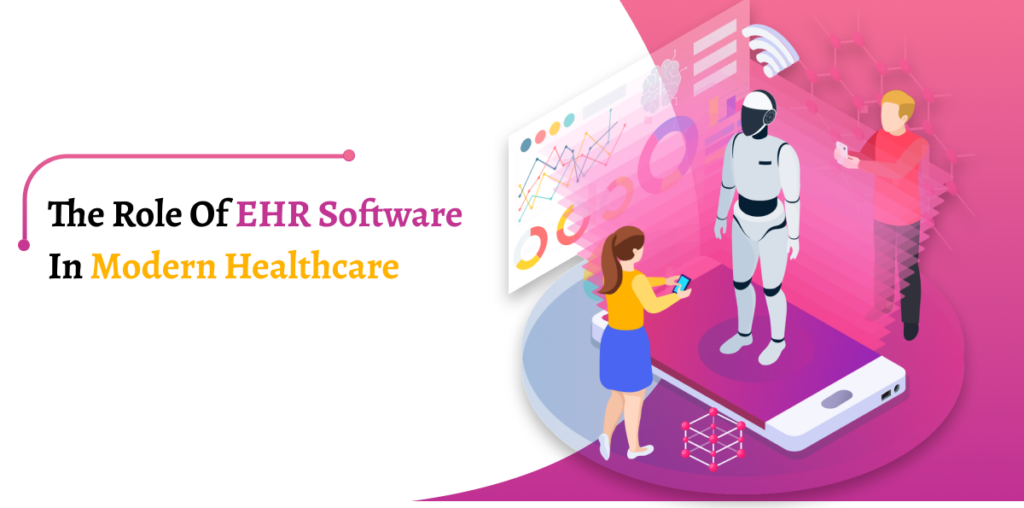Operating efficiency, knowledge management, and better patient care all depend on technology in the fast-changing medical industry. Among electronic health records systems, modern medical technology is one of the most transformative elements. Thanks to Electronic Health Records software, medical facilities now otherwise gather patients’ data. Improved compliance with medical standards will be guaranteed by switching from paper-based to electronic formats using improved communication, reduced mistakes, and better attention to medical rules. This article will cover the worth of EHR software, the many types of EHR software, and how it benefits healthcare organizations.
1. Better patient engagement and safety
1.1 Improved access to data helps you too.
EHR software packages first give access to patient data utilization. This aids medical practitioners in fast wise judgments, hence enhancing treatment choices and diagnostic circumstances. By giving patient data across several units, hospital EHR software helps to decrease treatment lags.
1.2 Reduced medical errors.
By aggregating computerized data entry with clinical decision support tools, an EHR system reduces human errors. More secure are drugs from physicians with functions including allergy alerts and automatic drug interaction warnings. Standardizing medical records helps somewhat to cut down mistakes by means of the premier EHR app.
1.3 Department which communicates well
With EHR software based on the cloud, doctors can easily send information to labs, pharmacies, and others. This ability to work together enhances organization, so ensuring that patients receive well-rounded therapy without unnecessary tests or contradicting prescriptions helps.
1.4 patients’ further engagement
Found in many modern EHR systems, patient portals enable people to view their medical records, contact their physicians, and schedule appointments. Greater honesty allowed by an EHR system helps patients to have more say in their own healthcare.
1.5 Better Prompt Leveraging Laws
The government mandates the use of EHR software to maintain uniform and safe patient files. Easier compliance with HIPAA and other medical directives are provided by EHR software programs with rolebased access control and encryption.
2. Different kinds of EHR software systems.
2.1 Three-point EHR software on the cloud.
Costeffective, readily accessible, and flexible, cloudbased EHR systems abound among hospitals. Perfect for businesses of small to medium size, these systems do not need onsite servers.
2.2 EHR system built in-house.
More system customization and data security are reasons why larger hospitals often choose on premises EHR software. Their stability and output will rise even if they are initially more expensive.
2.3 Exclusively field EHR systems
Different electronic health record programs support individual medical fields like cardiology, dermatology, and pediatric practice. Custom electronic health records systems provide tools and templates that help to meet professionals’ particular demands.
2.4, open-source EHR systems are available.
Businesses in the healthcare sector looking for custom products will find open-source EHR software very flexible. Even if setup calls for technical ability, organizations have free range to modify the computer program to suit their requirements.
2.5 EHR Software
Coordinated EHR allows doctors to maintain an ongoing workflow by linking other systems including billing, lab, and imaging software. The options spare on administrative work and enable improvement of results.
3. How do EHR Software Dealers assist?
3.1 Development of easy-to-use answers.
One top producer of electronic health records software stresses the need for user friendly interfaces. These companies promise that firsttime user experience allows medical personnel to efficiently browse around and make use of EHR program.
3.2 continuous growth and changes
The ongoing advancements in technology compel EHR software companies to occasionally update their products to include the latest legislative mandates and medical advances. This guarantees that medical professionals always have the latest tools.
3.3 Greater data security and confidentiality levels.
Among the most concerning problems concerning virtual medicine is data privacy. Daily audits, encryption, and multifactor authentication to stop data breaches are among the data security steps a well-known EHR software business values.
3.4 would refer to consulting and instructional services.
One’s ability to employ electronic health records software efficiently depends on good training. Onboarding, 24hour technical assistance, and instruction to help medical institutions with their digital records transformation are provided by top EHR software companies.
3.5 cost-effective ideas
Several EHR software firms could help solve a few financial constraints. Some companies charge per membership, others offer onetime buys. Choosing the ideal EHR software will enable hospitals to cut expenses and maintain profitability.
4. Select the best EHR software for hospitals
4.1 volume and suppleness.hover_help
The best EHR software must be flexible to support healthcare organizations in meeting rising demand. Customization tools enable companies to customize the system to fit their particular working approach.
4.2 Compatibility of systems with others and systems
Quality EHR software should integrate smoothly with third-party applications such as laboratory, insurance, and billing systems. This enables more efficiency and less superfluous work.
4.3 Simpleness of use
A straightforward user EHR system allowed doctors fast data input with little direction. Together with a dynamic dashboard, intuitive automation components enable production to soar.
4.4 legal conformity and security provisions
Apart from discussions, one must follow the rules of HIPAA and GDPR. Top EHR technology uses sophisticated security measures to protect patient data and guarantee legal compliance.
4.4 Consideration Regarding Expenses
Several healthcare organizations have access to several financial sources. While smaller medical offices could have cloudbased EHR software, a more affordable option, large hospitals could prefer onsite software for more control.
5. Software improvements for electronic health records could be achieved
5.1 products a result of artificial intelligence and machine learning integrating
Artificial intelligence in EHR software offers intelligent alerts, automatic diagnostic suggestions, and forecasting analysis. This also produces better patient outcomes and increases efficiency.
5.2 Using telemedicine.
Companies developing EHR software have been driven by the rise of telehealth to provide virtual appointment and off-campus patient monitoring systems.
5.3 Blockchain Technology for Information Preservation
One way to enhance the privacy and immutability of patient records in EHR computer systems is via blockchain technology.
5.4 voice recognition and natural language processing.
If they have sophisticated voice recognition technology, next-generation EHR software systems could assist physicians in producing sophisticated data input and documentation.
5.5 Friendly mobile codecompatible EHR systems.
The growing use of cellphones in medical treatment is driving EHR software to provide mobile-friendly options that will therefore empower doctors to access patient files on the go.
Conclusion
By bettering data security, patient care, and efficiency, the use of EHR software has transformed modern medicine. Several approaches solve many healthcare problems starting from hospital EHR software to cloud-based EHR software. The ideal EHR solution is defined by its integration, compliance, user-friendliness, and scalability. Advances in technology will likely lead EHR software direction to include components of artificial intelligence, blockchain, and telemedicine; thus, strengthening the ability of the medical field to provide smooth and effective patient treatment.



